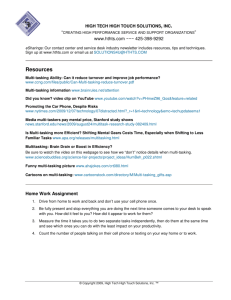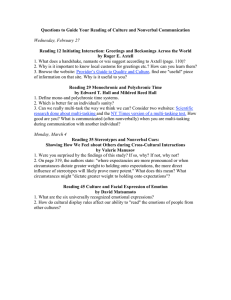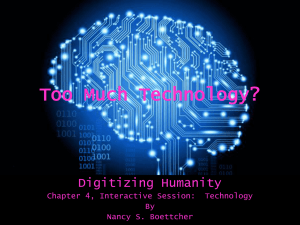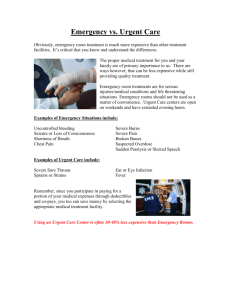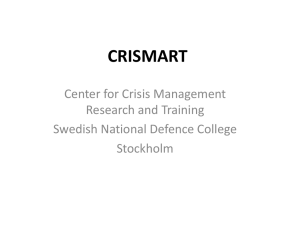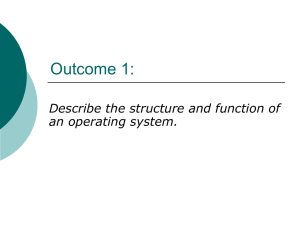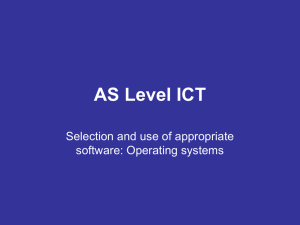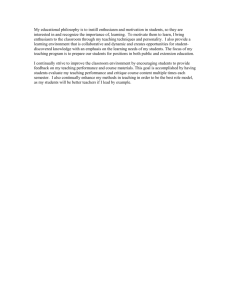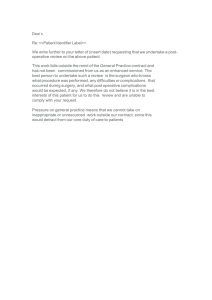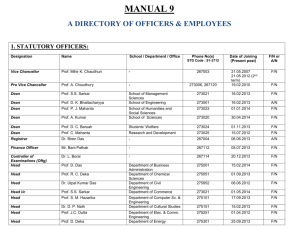The Trouble with Continuous Multi
advertisement
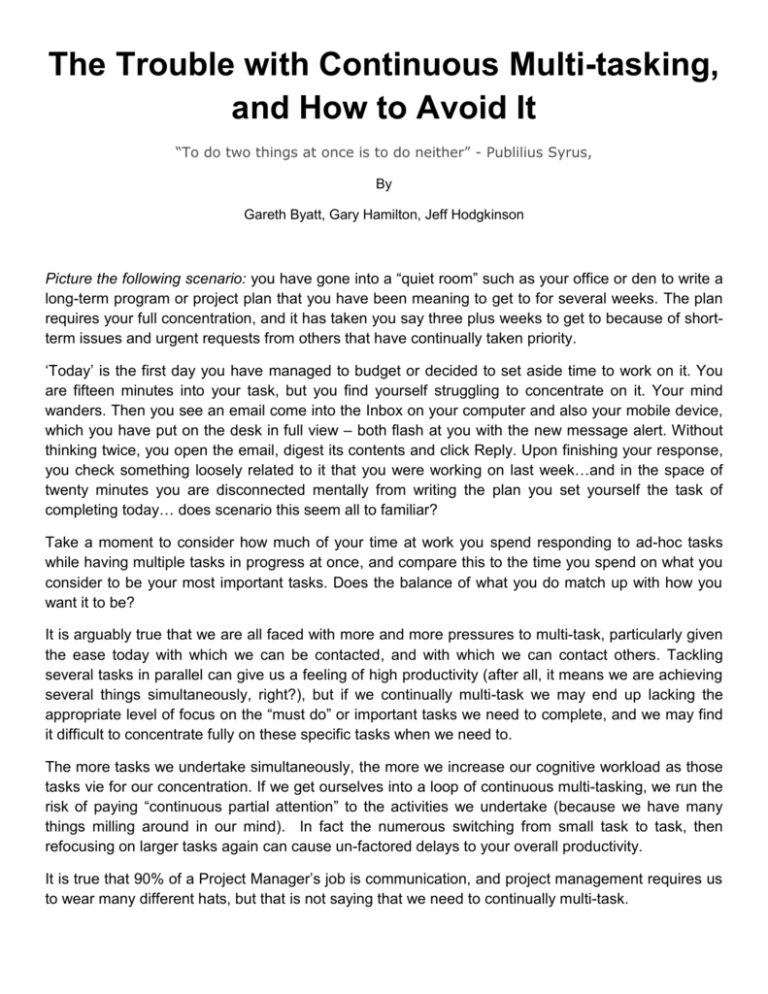
The Trouble with Continuous Multi-tasking, and How to Avoid It “To do two things at once is to do neither” - Publilius Syrus, By Gareth Byatt, Gary Hamilton, Jeff Hodgkinson Picture the following scenario: you have gone into a “quiet room” such as your office or den to write a long-term program or project plan that you have been meaning to get to for several weeks. The plan requires your full concentration, and it has taken you say three plus weeks to get to because of shortterm issues and urgent requests from others that have continually taken priority. „Today‟ is the first day you have managed to budget or decided to set aside time to work on it. You are fifteen minutes into your task, but you find yourself struggling to concentrate on it. Your mind wanders. Then you see an email come into the Inbox on your computer and also your mobile device, which you have put on the desk in full view – both flash at you with the new message alert. Without thinking twice, you open the email, digest its contents and click Reply. Upon finishing your response, you check something loosely related to it that you were working on last week…and in the space of twenty minutes you are disconnected mentally from writing the plan you set yourself the task of completing today… does scenario this seem all to familiar? Take a moment to consider how much of your time at work you spend responding to ad-hoc tasks while having multiple tasks in progress at once, and compare this to the time you spend on what you consider to be your most important tasks. Does the balance of what you do match up with how you want it to be? It is arguably true that we are all faced with more and more pressures to multi-task, particularly given the ease today with which we can be contacted, and with which we can contact others. Tackling several tasks in parallel can give us a feeling of high productivity (after all, it means we are achieving several things simultaneously, right?), but if we continually multi-task we may end up lacking the appropriate level of focus on the “must do” or important tasks we need to complete, and we may find it difficult to concentrate fully on these specific tasks when we need to. The more tasks we undertake simultaneously, the more we increase our cognitive workload as those tasks vie for our concentration. If we get ourselves into a loop of continuous multi-tasking, we run the risk of paying “continuous partial attention” to the activities we undertake (because we have many things milling around in our mind). In fact the numerous switching from small task to task, then refocusing on larger tasks again can cause un-factored delays to your overall productivity. It is true that 90% of a Project Manager‟s job is communication, and project management requires us to wear many different hats, but that is not saying that we need to continually multi-task. Much research exists into efficient ways of working. We do not propose to discuss such theory in this article; rather we wish to highlight some of the challenges of multi-tasking too much. Here are a few suggestions to consider if you are faced with the challenge of “continuous multitasking”: Before you start work each day, think about what your known “must do” and important tasks are, and set yourself a goal to achieve them – whilst accepting that you won‟t always be able to do everything, because unplanned things may arise that you urgently need to respond to, or other factors may impede your progress in your “target tasks” causing you to refocus on others. Don‟t confuse what‟s important or a “must do” with what‟s urgent, however. As you think about your tasks, take a few minutes to analyze and categorize your daily task list into A, B, and C priorities. o „A‟s are your „must do – critical‟ tasks that you know about, or potentially that crop up during the day. These need focus ahead of the B‟s. o „B‟s are your „should do - important‟ tasks. become the A‟s tomorrow. What you don‟t complete today might o „C‟ are the „nice to do – beneficial‟ tasks that can hold off a while, or that you can work on when the A‟s and B‟s are done or progressed as far as they can be. When you know you need to focus on something important, block out time in your diary (calendar) and if necessary let people who work with you know that you will be working on it (you may want to let certain people know how to contact you in an emergency or if something comes up that is urgent to respond to, and to leave this particular “communications channel” open to them). Try switching off your electronic and phone messaging tools when you work on important tasks (or keep one “emergency channel or tone” available for the few people who you will allow to contact you). Turn off or set you status as “Offline” or “Do not Disturb” on your instant messaging application so others are not likely to “ping” you. If you are in a room, hang a „Do Not Disturb‟ or „Priority Interrupts Only‟ sign outside. Or a „Post-It‟ note will do fine. If you are home and the family is there, would you consider wearing your office badge around the house which signifies you‟re „working‟ and invisible for the moment? You never know, it might keep you in a “work” frame of mind. When you have a complex or detailed task to undertake, know that it can take a while to get into the right frame of mind, so allow yourself time to “get into it”. Try not to resist the temptation to veer off to “check new emails” and the like. If you have too, close Outlook or other email and take the phone off the hook. Remember that you choose the attention you give to any given task. In conclusion, the challenge of multi-tasking is ever-present today. How we choose to allocate time to our tasks determines what we are able to get done. Striking the right balance between multi-tasking and focusing on singular, important tasks that we want to complete is a challenge for us all. We hope that reading this short article has not distracted you from something you were working on…!
